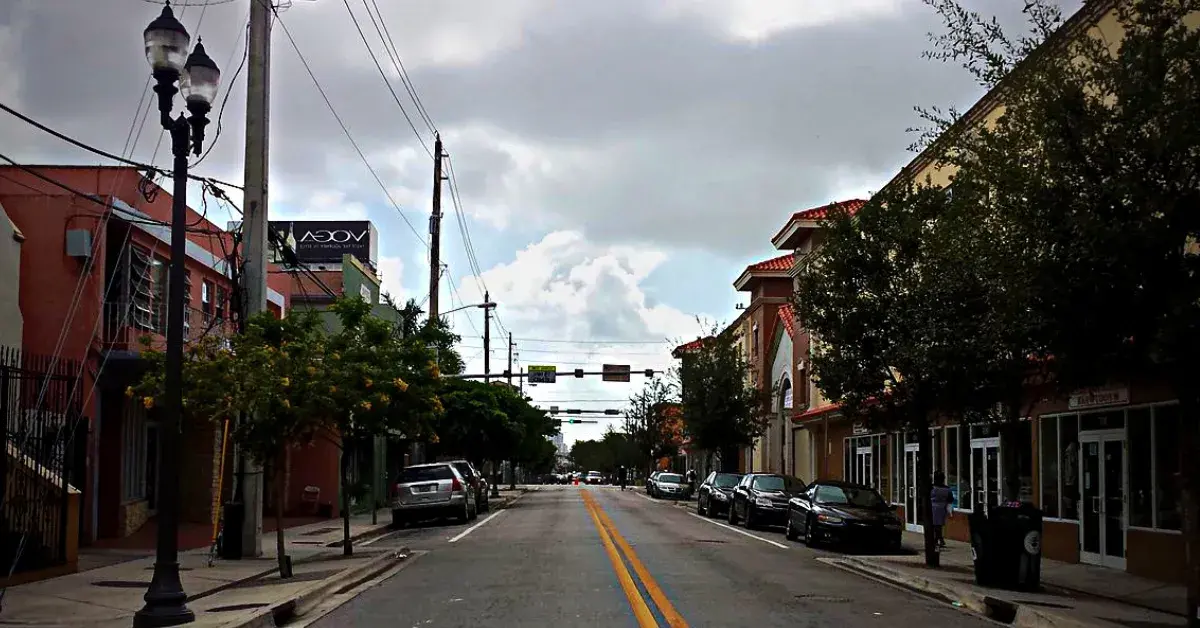Opened in 1920 as a Jewish working-class suburb, today many consider Overtown as home to a largely Hispanic and black community and the area remains one of Miami’s most diverse neighborhoods with several historic homes dating back to the early 1900s.
If you love unique architecture, intriguing locales and a laidback pace, then consider moving to the Overtown neighborhood.
What Is Overtown
Overtown is one of two official Miami neighborhood names recognized by the U.S. Census Bureau with the other being Redondo Beach. Overtown is a neighborhood on the south side of Miami, Florida in the United States and is part of the Miami-Dade County Metropolitan Statistical Area.
The neighborhood is sometimes informally called “over” because of its location on the overtaking track of the Miami River.
What Is The History Of The Overtown Neighborhood
The city of Miami, originally named Miami Beach, was incorporated in 1909. During the early years of its existence, Miami was a resort city, catering to wealthy tourists who came to enjoy the bright lights, crystal clear waters and open spaces.
By the early 1920s, however, the city was experiencing major population growth and began to expand. One of the city’s first annexation requests was to the southwest, and what had once been the outskirts of Miami Beach was now part of the city.

A downtown district to house the growing city government and business leaders was planned and named after the avenue that connected Miami Beach with Miami: Overtown. The name also anticipated the areas growing urban character, which featured large, open-air markets.
These continue to be one of the most defining characteristics of the neighborhood today.
Overtown: The Original Neighborhood In Miami FL
Overtown actually comes from the name of an old Miami neighborhood that was known for its many groceries, delis and nightclubs. A post office was located there from 1915 until 1954 when it was renamed Overtown in honor of Leo F. O’Donnell, Jr., the last Postmaster General from the Democratic Party.
O’Donnell’s family owned a grocery store in the Hayes-Muirtown area. After he retired, the store was renamed Leo’s Grocery. In 1964, the family moved the store to its current location on Orient Park South Side. The neighborhood was first conceived as a residential area and was officially designated as such in 1977.
Today, much of the original fabric of Oventown can still be found intact. The areas architecture is a unique blend of Spanish and African American influences. It is also known for its open-air markets, cobbled streets and ornate federal buildings.
The Development Of Overtown
Overtown was once the center of a thriving industrial city called Miami Lakes. Today, those living and working in the area refer to it as “the valley” in reference to the surrounding hills. The area’s development can be traced back to the 1880s, when several wealthy Miami families settled here because it was cheaper than other areas of town.
By the 1920s, the community had already begun to attract day laborers, migrant workers and other working-class people. The area also became home to a substantial Jewish community, and there are still several active synagogues in the area.
By the 1950s, the neighborhood had grown to become a predominantly black community, with a large Cuban population. Despite its diversity, however, Miami’s Southside remained largely homogeneous. In 1964, the South Miami City Commission passed an ordinance preventing tenant discrimination based on race or color.
However, many South Miami homeowners and businesses opposed the measure, and the ordinance was eventually overturned in court. Today, South Miami is a very diverse neighborhood with large clusters of Cuban, Hispanic and black residents.

